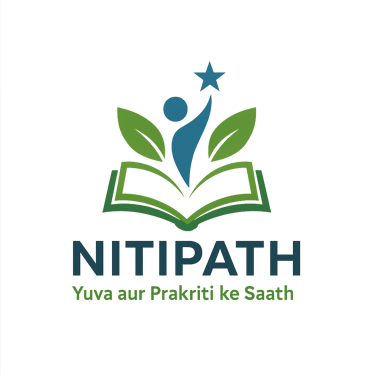YUVA AUR PRAKRTI KE SATH
From Textbooks to Toolkits: Rethinking Civic Education for India’s Young Citizens
Blog post description.
YOUTH
Aditya Janu
12/5/20232 min read


Ask most Indian students what “civic education” means, and the answer often sounds the same: memorising constitutional articles, writing exam answers about fundamental rights, and reciting “by the people, for the people.” Yet beyond these words, the lived practice of democracy rarely enters classrooms.
In a country where nearly 65% of the population is under 35, this is more than a missed opportunity — it’s a systemic gap. If democracy is to thrive, young citizens must learn not just what democracy is, but how to do it.
The Problem: Too Much Theory, Too Little Practice
Today, civic education in most Indian schools stays on paper:
Lessons focus on constitutional design, rarely on local governance or practical engagement.
Participation often stops at ceremonial elections for school captain, stripped of real decision-making power.
There’s little exposure to community councils, Gram Sabhas, or ward committees where everyday democracy happens.
As a result, many young Indians finish school without ever attending a local meeting, reading a municipal budget, or debating a live policy issue. Civic knowledge remains abstract — distant from the messy, negotiated realities of governance.
What Other Countries Do Differently
Globally, civic education is increasingly active, local, and problem-based:
Finland’s curriculum includes phenomenon-based learning, where students research local issues like air quality or transport and propose solutions.
Germany’s Jugend debattiert (Youth Debates) programmetrains students to debate real policy questions, judged on clarity and evidence rather than rhetoric.
US service-learning models require students to complete community projects — from voter registration drives to neighbourhood clean-ups — linked to classroom lessons.
These approaches shift civic learning from passive memorisation to active problem-solving.
Why This Matters
When young people practice democracy before they vote:
They learn agency: Seeing that ideas can lead to real change.
They gain civic skills: Negotiating, debating, listening, researching.
They build trust: Understanding how governance works — and why it sometimes fails — makes cynicism less automatic.
This isn’t about turning every student into a politician. It’s about building informed citizens who can participate, question, and collaborate.
How India Can Move from Textbooks to Toolkits
School Policy Labs: Where students identify a real community issue — waste, water, road safety — and design solutions to present to local councils.
Civic Internships: Partner students with panchayats, municipal offices, or NGOs so they see governance up close, not just through civics books.
Debate & Deliberation: Structured debates on real local or national policy issues, judged on research and argument quality.
Citizen Assemblies for Youth: Simulate local planning forums where students allocate mock budgets or draft resolutions.
Mandatory Local Exposure: Require every student to attend at least one ward meeting, Gram Sabha, or community hearing before graduation.
Beyond Exams, Toward Citizenship
If civic education ends at rote learning, democracy risks staying paper-thin. But when students practice questioning, proposing, and collaborating, they learn what citizenship feels like — messy, imperfect, but real.
True democracy isn’t just about knowing your rights. It’s about having the tools, confidence, and habits to exercise them — long before, and long after, election day.
In the end, textbooks are vital. But to truly prepare young citizens, India must give them toolkits too.
